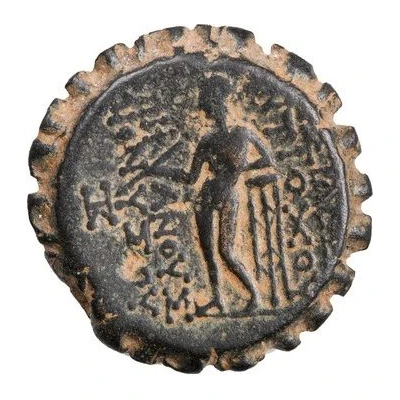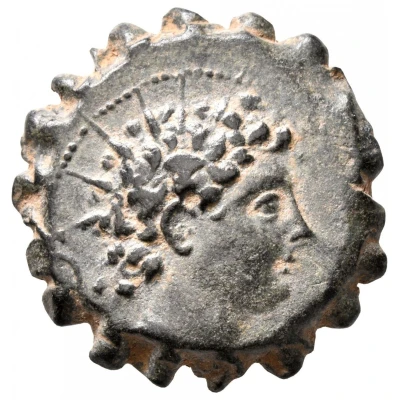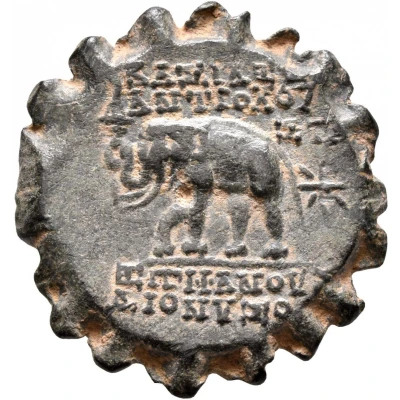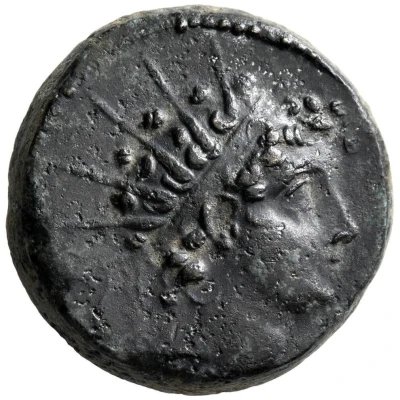
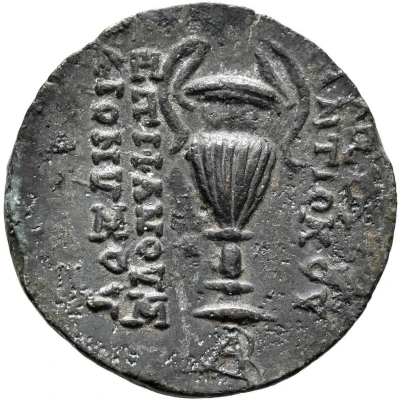

© Leu Numismatik
Dichalkon - Antiochos VI Dionysos Apameia 144 BC - 143 BC
| Bronze | 7.22 g | 21 mm |
| Issuer | Seleucid Empire (Seleucid Empire (305 BC - 64 BC)) |
|---|---|
| King | Antiochos VI Dionysos (145 BC - 140 BC) |
| Type | Standard circulation coin |
| Years | 144 BC - 143 BC |
| Value | Dichalkon (1⁄24) |
| Currency | Drachm |
| Composition | Bronze |
| Weight | 7.22 g |
| Diameter | 21 mm |
| Shape | Round (irregular) |
| Technique | Hammered |
| Orientation | Variable alignment ↺ |
| Demonetized | Yes |
| Updated | 2024-10-10 |
| Numista | N#427185 |
|---|---|
| Rarity index | 97% |
Reverse
Kantharos; below, monogram.
Script: Greek
Lettering:
BAΣIΛEΩΣ
ANTIOXOY
EΠIΦANOYΣ
ΔIONYΣOY
Translation: King Antiochos (VI) Epiphanes Dionysos
Interesting fact
One interesting fact about this coin is that it features a unique blend of Greek and Persian influences in its design. The obverse side of the coin depicts the king, Antiochos VI Dionysos, with a Greek-style laurel wreath on his head, while the reverse side shows the god Apollo holding a lyre, a common motif in Greek art. However, the coin's inscription is in both Greek and Aramaic, reflecting the multicultural nature of the Seleucid Empire. This blending of cultures is a characteristic feature of Hellenistic art and architecture, which emerged during the period of Greek colonization in the Middle East.

